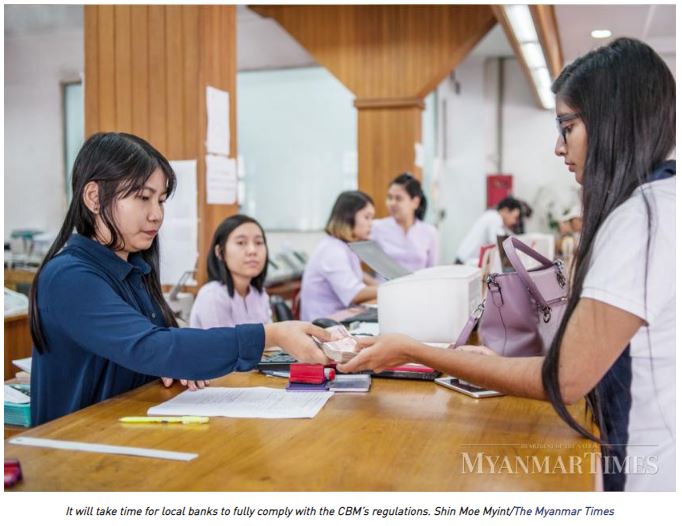Myanmar: Local banks struggle with stricter regulations, but on the right path
The Myanmar banking sector has improved since regulations aimed at strengthening the system were imposed over the past two years, U Soe Thein, vice governor of the Central Bank of Myanmar (CBM), told the media late last month.
“The Financial Institutions Law was enacted in 2016 and new rules were released again in 2017. At first, the banking community protested against the regulations. But most of the banks complied with our directives and there has been significant growth and improvement in the banking sector over the past year,” U Soe Thein said.
Among the directives released by the CBM is notification 7/2017 last November under which all local banks must convert overdraft facilities into term loans. By July 2020, the volume of overdrafts as a percentage of a bank’s loan book should be reduced to 20 percent from 50 pc in July this year.
The aim is to enable growth and development in the local banking sector, which, in turn, will equip it to support and lend to Myanmar’s expanding economy.
Up until 2016, local banks lent mainly to a limited portfolio of borrowers. “Before the directives were issued in 2017, the local banking sector was very weak in terms of the services banks were prepared to offer. They also provided loans to selected groups of companies, which recycled the funds among themselves. So we have placed restrictions on related-party loans,” said U Bo Bo Nge, CBM deputy governor.
Teething problems
He added that the regulations were ill-received at first. “After the release of the 2017 directive, the result was more competition as well as difficulties in giving out loans,” said U Bo Bo Nge.
The new regulations introduced restrictions and more hassle for banks. For example, banks were given up until March 31 to convert overdrafts to term loans not exceeding three years. Meanwhile, each bank’s policy on term loan management must be submitted to the CBM.
Additional disclosures, such as whether the loans are being provided to related parties or not, were also introduced.
Meanwhile, banks are now required to submit a list of loans of more than K5 billion or 10pc of their capital, while details of borrowers who fail to repay on time must also be submitted to the CBM.
Things are slowly improving though. “The banks have been following the regulations. However, it will still take some time for full compliance to be possible,” said U Pe Myint, senior adviser of CB Bank.
“Before the regulations, rolling over loans indefinitely was common practice. While most banks have been complying with the CBM’s directives, some are negotiating with the Central Bank for further extensions in the deadline to comply. As the domestic economy has been weakening, some banks have found it difficult to fully convert overdrafts to term loans,” said U Than Lwin, senior adviser of KBZ Bank and former vice chair of the CBM.
Foreign competition
Because of the difficulties local banks face in credit management and providing capital support to firms and entrepreneurs, the CBM on November 8 permitted foreign banks to offer loan and other banking services.
“Now that the foreign banks have permission to give out loans and other banking services, the banking sector is expected to stabilise further,” said U Soe Thein.
Foreign banks are also free to set their own interest rates as long as the loans are made in foreign currencies.
There are restrictions on accepting immovable properties such as land and building as collateral as well as fixed deposits, savings and interest payments in the local kyat.
From next year, foreign banks will also be able to expand the number of branches across the country.
Meanwhile, the local banks will have to contend with more competition from the foreign banks. While that will place them under further pressure as they struggle to comply with stricter regulations in the short term, the CBM’s moves are positive in paving the way for a stronger financial system in the long term, said economist U Naing Ko Ko.
“The local banks need to develop more to meaningfully support the economy. So far, the banks have been doing their best to comply with the changes implemented by the CBM. In the meantime though, the Central Bank needs to provide more assistance and support to the local banks in the interim period,” he said.
Source: https://www.mmtimes.com/news/local-banks-struggle-stricter-regulations-right-path.html


 English
English




